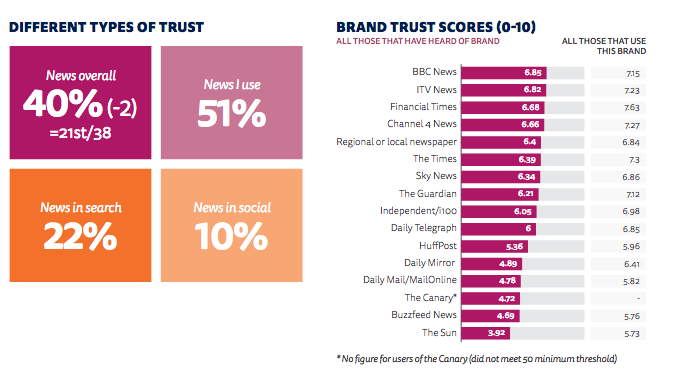
In the backdrop of rising social media usage in young audiences and declining trust in the media, news organisations are looking at the best ways to convert Gen Z social media users into engaging and paying news consumers.
For The Times though, younger audience is ‘business as usual’.
"You can become quite distracted by the medium that you deliver your journalism through,” said Richard Fletcher, business editor, The Times, speaking at the International Building Press event yesterday (20 June 2019).
"The most important thing to focus on is the quality of your journalism," he said about the news site that has 26,000 newsletter subscribers and 286k digital paying subscribers, in addition to its 244k Instagram followers.
Fletcher also pointed out that the 2019 Reuters Digital News Report, which found that trust in the media continues to fall, pegs The Times above other UK brands like Sky News, The Guardian, and The Telegraph.

"Whether it is print, website or mobile, at the end of the day, we’re asking people to pay for our journalism. Wherever it appears, that quality needs to be there.
"It’s about creating a subscriber base. We’re not particularly fussed about how they access our journalism. So long as they are paying for it, I’m relaxed how they do it."
Through offering a 90 per cent discount on student subscriptions, plus offering a free access to its content for Loughborough University and the Imperial College London students, The Times strives to entice the next generation of readers.
Perhaps to some degree of surprise, Fletcher also said that the business section, which he oversees, is reflecting younger and ‘less male’ readership compared to other sections of the paper, where there has traditionally been a bias towards older, male readers.
At @mediaIBP event on ‘can traditional media cut it with Gen Z?’ & panel with @fletcherr @_joshjs @ellie_pm @EllaJessel. I’ll be v interested to hear how they think the media can engage those in their 20s & younger. Our research at LMC suggests they’re not succeeding so far. pic.twitter.com/V7WYDkgDfu
— Liz Male MBE (@lizmale) June 20, 2019
On the other hand, The Economist was one of the first UK news organisations to be publishing content on Snapchat, and it has also started using Instagram to reversion original, data-driven stories.
"The goal of the social media team is to take the journalism from the weekly print edition and produce that in a digestible format for millions of readers on social media," said Josh Spencer, social media journalist, The Economist.
"This is where young people are increasingly spending more of their time, we really aim to break this rich content into bite-sized chunks. It’s seen as an extension of the journalism rather than just a way to promote it."
Spencer agreed with Fletcher that the quality of the journalism is key but being visually appealing helps. Through animated charts and polls, the magazine has seen its Instagram following swell to 3.5m, of which 70 per cent is in the 18-34 bracket.
"It’s about engaging audiences in a way that is beyond them seeing something and expecting them to click a link," he explained, adding that it is also important to showcase the full extent of the publisher's coverage.
"This is their first introduction of our brand, that may never have seen The Economist before. It’s important we make that first impression a good one."
This does not, however, spell the end of print, as Spencer said that social and print can complement one another.
"It’s nice to be connected and be on top of the world, but sitting down and reading a newspaper is a welcome break from the constant flow of information," he concluded.
Free daily newsletter
If you like our news and feature articles, you can sign up to receive our free daily (Mon-Fri) email newsletter (mobile friendly).









